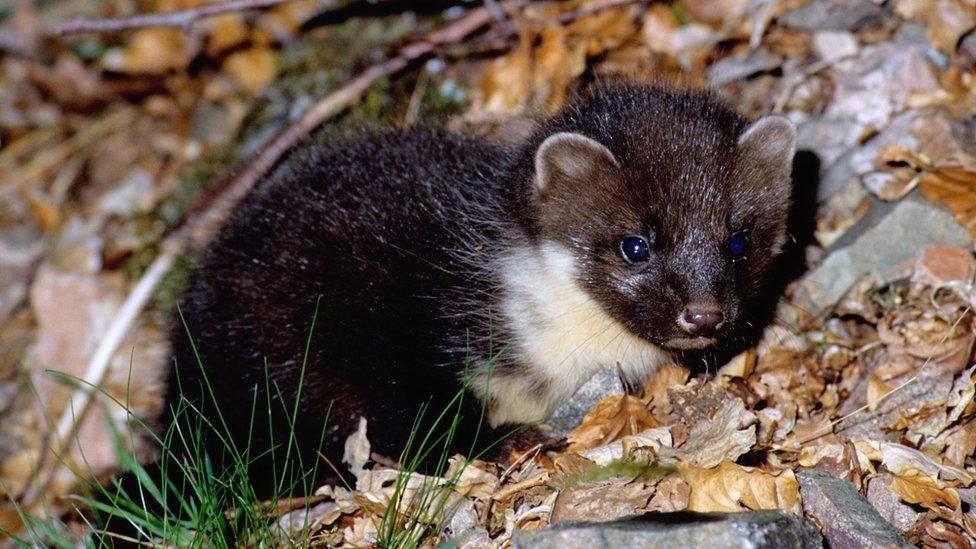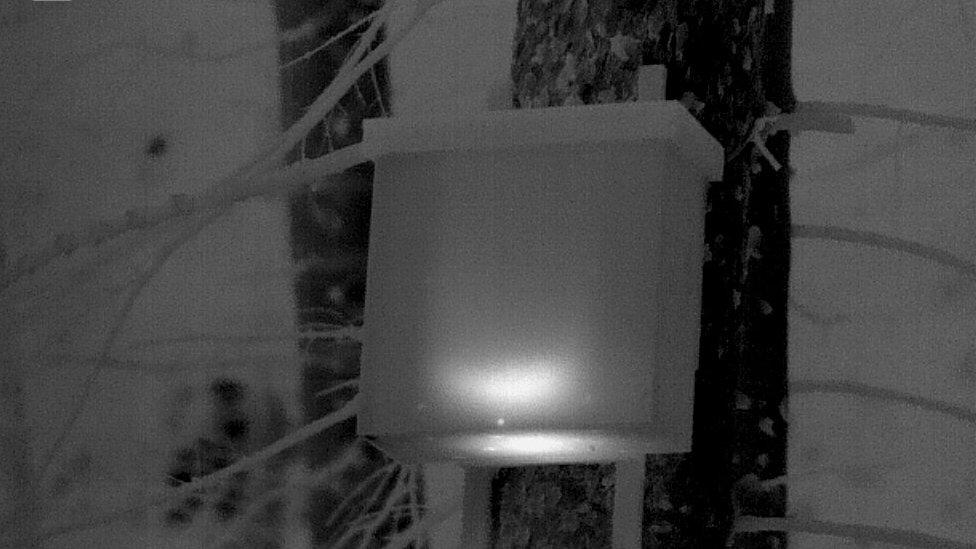Thermal imaging monitors Galloway pine marten population
- Published

The trial in Galloway could be extended across Scotland
Thermal imaging cameras have been used to monitor the pine marten population of Galloway Forest.
Forestry and Land Scotland (FLS) is trying out the technique at more than 100 artificial den boxes.
The system allows the animal numbers to be counted without the stress of manual checks.
FLS said the trial over the past year had shown "positive results" and it now hopes to extend it to other sites across Scotland.
The thermal imaging camera allows the team to detect a heat source in the pine marten den boxes all year round.
It means they can be checked on at "crucial periods" such as the spring when kits are born and also in winter when they are used for shelter.

Thermal cameras allow boxes to be monitored without disturbing inhabitants
FLS said manual checks - which involve opening each box - could cause stress for the pine martens.
The cameras allow them to check how many are in use without disturbing the inhabitants.
They have recorded a "significant increase" in the local pine marten population over the past year.
This has been attributed to a number of factors including the installation of the boxes, good forest management and an increase in voles in the area - a main food source.

Pine martens can help to protect red squirrels as they like eating grey squirrels
FLS environment forester Kim Kirkbride said: "We have seen the most productive year for pine marten kits being born in Galloway Forest.
"Having a bountiful food supply means more pine martens are able to produce offspring.
"The new thermal imaging technology ensures we can identify how many den boxes are in use over crucial times of the year.
"What's even better is that we can monitor the den boxes at a safe distance, so we are not disturbing any occupants."
FLS said the increase in pine marten numbers had also had a positive impact for red squirrels with grey squirrels being among their "preferred prey".